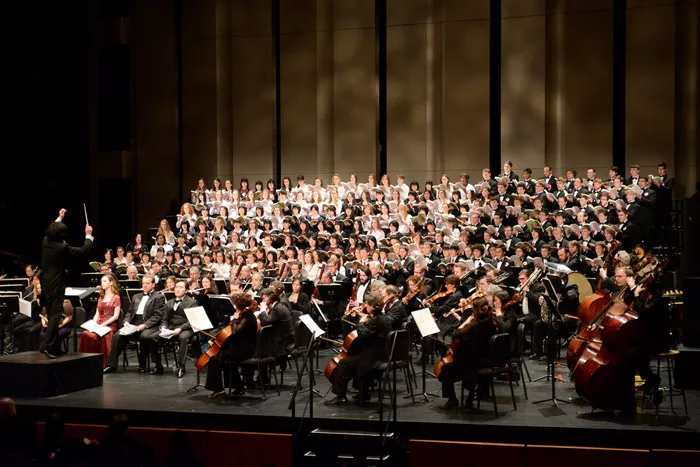Neoclassical art and classical music are two significant cultural expressions that emerged from different periods but share many overlapping characteristics. Both forms seek to revive and emulate the classical ideals of antiquity, focusing on harmony, clarity, and proportion. This article delves into the shared characteristics of neoclassical art and classical music, highlighting their historical contexts, thematic elements, stylistic features, and lasting impacts on subsequent artistic and musical developments.
1. Historical Contexts
The Age of Enlightenment: Both neoclassical art and classical music flourished during the Age of Enlightenment, a period in the 18th century characterized by an emphasis on reason, science, and intellectual interchange. This era was marked by a revival of interest in the art and philosophy of ancient Greece and Rome, which greatly influenced the aesthetics and principles guiding both art and music.
Rejection of Baroque Excess: The transition to neoclassicism in art and classical music in music was partly a reaction against the extravagance and complexity of the Baroque period. Artists and composers sought to return to a more restrained, orderly, and rational approach, mirroring the Enlightenment ideals of clarity and reason.
See Also: A Complete Guide to Apocalyptica Beethoven 5th
2. Thematic Elements
Emphasis on Classical Antiquity: Both neoclassical art and classical music draw heavily on the themes and aesthetics of ancient Greek and Roman culture. This is evident in the subject matter of neoclassical paintings and sculptures, which often depict mythological scenes, historical events, and figures from antiquity. Similarly, classical music compositions frequently incorporate structures and forms inspired by the ancient world, such as symphonies, sonatas, and operas that evoke the grandeur and harmony of classical antiquity.
Idealization and Rationality: Neoclassical art and classical music both strive for idealization and balance. In neoclassical art, this is achieved through the depiction of perfect human forms, balanced compositions, and the use of harmonious colors and lines. Classical music mirrors this through its structured forms, clear melodic lines, and balanced orchestration, creating a sense of order and proportion that aligns with the ideals of rationality and perfection.
3. Stylistic Features
Clarity and Simplicity: One of the most prominent shared characteristics is clarity and simplicity. Neoclassical art is known for its clean lines, minimal ornamentation, and emphasis on symmetry and proportion. Similarly, classical music favors clear, singable melodies, balanced phrases, and straightforward harmonic progressions. This focus on clarity ensures that both the visual and auditory elements are easily comprehensible and aesthetically pleasing.
Form and Structure: Both neoclassical art and classical music place a high value on form and structure. In neoclassical art, this is reflected in the precise, geometrically balanced compositions and the use of perspective to create a sense of depth and realism. In classical music, this emphasis on form is evident in the use of well-defined structures such as sonata-allegro form, theme and variations, and rondo form. These structures provide a framework that allows for creative expression within a coherent and logical framework.
Emotional Restraint: Emotional restraint is another key feature of both neoclassical art and classical music. Unlike the Baroque period, which often emphasized dramatic, emotional expression, the neoclassical and classical movements sought to convey a more measured and controlled emotional tone. This is evident in the serene, dignified expressions of neoclassical figures and the balanced, moderate dynamics and articulations in classical music compositions.
4. Influence of Classical Philosophy
Humanism and Rationality: The influence of classical philosophy, particularly humanism and rationality, is deeply ingrained in both neoclassical art and classical music. Humanism, with its emphasis on the value and potential of human beings, is reflected in the idealized representations of the human form in neoclassical art. In classical music, humanism is evident in the focus on clarity and balance, which aim to elevate the human spirit through harmonious and rational compositions.
Moral and Ethical Themes: Neoclassical art often incorporates moral and ethical themes derived from classical literature and philosophy. These themes are portrayed through allegorical and historical scenes that promote virtues such as courage, loyalty, and justice. Similarly, classical music compositions often explore ethical and philosophical themes, using music to convey messages of morality and human values.
See Also: 20 Classical Lullabies
5. Enduring Legacy
Influence on Subsequent Art and Music: The principles of neoclassicism and classical music have had a lasting impact on subsequent art and music movements. The emphasis on clarity, balance, and rationality influenced the development of various artistic and musical styles in the 19th and 20th centuries, including Romanticism, which, while a reaction against some neoclassical principles, still retained elements of form and structure derived from classical traditions.
Modern Adaptations: In modern times, the influence of neoclassical art and classical music can be seen in various forms of contemporary art and music. Many modern artists and composers continue to draw inspiration from classical antiquity, incorporating neoclassical and classical elements into their work to create a sense of timelessness and continuity with the past.
Conclusion
Neoclassical art and classical music, despite emerging from different cultural contexts, share a remarkable number of characteristics. Both are deeply rooted in the revival of classical antiquity, emphasizing clarity, balance, and rationality. They strive for idealization and emotional restraint, reflecting the intellectual and philosophical ideals of their time. The enduring legacy of these movements continues to influence and inspire contemporary art and music, underscoring the timeless appeal of classical ideals. As we continue to explore and appreciate these forms, we recognize their profound impact on shaping the aesthetic and intellectual landscape of Western culture.

